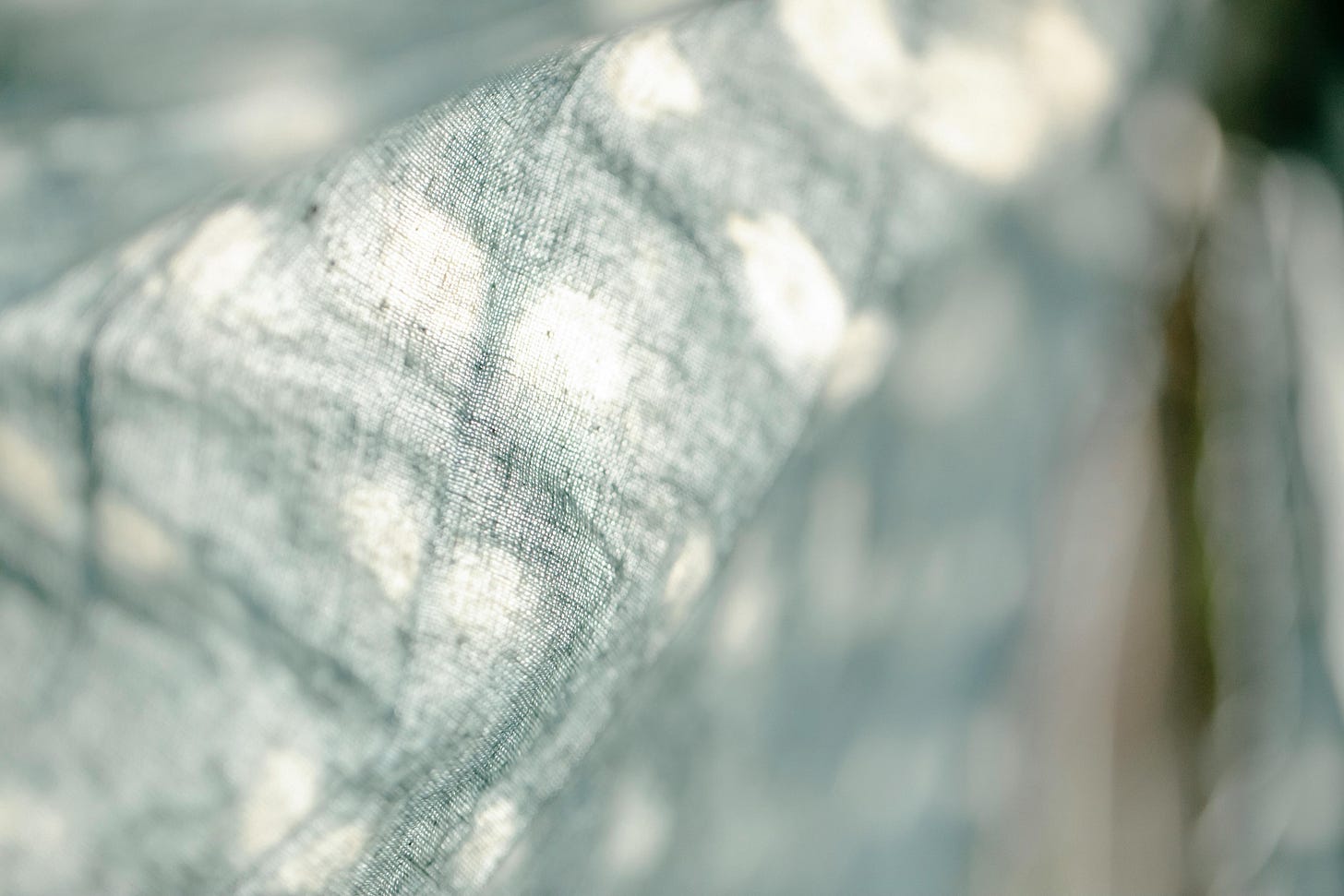on true noticing — that transmutation of looking into seeing
to my interior design students... and to anyone willing to heal from hopelessness
Alexandra Horowitz writes in “On Looking: Eleven Walks With Expert Eyes”
Part of normal human development is learning to notice less than we are able to. The world is awash in details of color, form, sound — but to function, we have to ignore some of it.
The world still holds all those details. And we can retrain ourselves to notice them again. But we will find ourselves with something more than the lack of practice:
Part of what restricts us seeing things is that we have an expectation about what we will see, and we are actually perceptually restricted by that expectation. In a sense, expectation is the lost cousin of attention: both serve to reduce what we need to process of the world “out there.” Attention is the more charismatic member, packaged and sold more effectively, but expectation is also a crucial part of what we see. Together they allow us to be functional, reducing the sensory chaos of the world into unbothersome and understandable units.
Because how we look at the world shapes the world we see, every act of noticing is an act of worlding. The Latin root of notice is to begin knowing, to have an instrument of recognition. And yet, human consciousness is a prediction machine that recognizes only what it already knows, sees what it expects to see, lensed through its anticipations and past experience, says Maria Popova. Furthermore, we have to be mindful of another important cognitive biass:
One perceptual constraint that I knowingly labor under is the constraint that we all create for ourselves: we summarize and generalize, stop looking at particulars and start taking in scenes at a glance—all in an effort to not be overwhelmed visually when we just need to make it through the day.
This is not necessarily a harmful process, really. We are constantly perceiving ecosystems -- "In nature, nothing exists alone" (Rachel Carson, Silent Spring). Our goal is to differentiate between the "systems" that we are observing, and the way in which any particular element of that system exists within it, what makes anything (an object, a person, a shade of colour, a particular texture) different and unique; and, of course, question the assumptions we have made in the past about all those elements, their value, their behaviour, their possibilities.
The artist seems to retain something of the child’s visual strategy: how to look at the world before knowing (or without thinking about) the name or function of everything that catches the eye. An infant treats objects with an unprejudiced equivalence: the plastic truck is of no more intrinsic worth to the child than an empty box is, until the former is called a toy and the latter is called garbage.
The next step in the process of noticing the world must come from a change in pacing, a slower rhythm of motion. Our gestures should reduce speed, breathe through action, perceive their own sense of space and their own unfolding. This will naturally radiate onto space, perception will gradually reawaken.
Right now, you are missing the vast majority of what is happening around you. You are missing the events unfolding in your body, in the distance, and right in front of you.
By marshaling your attention to these words, helpfully framed in a distinct border of white, you are ignoring an unthinkably large amount of information that continues to bombard all of your senses: the hum of the fluorescent lights, the ambient noise in a large room, the places your chair presses against your legs or back, your tongue touching the roof of your mouth, the tension you are holding in your shoulders or jaw, the map of the cool and warm places on your body, the constant hum of traffic or a distant lawn-mower, the blurred view of your own shoulders and torso in your peripheral vision, a chirp of a bug or whine of a kitchen appliance.
Maria Popova writes in her latest post:
Scraps of matter, scraps of time, filigrees of flesh — these are the constituents of our lives. We see with the mind, but it is the body that does the looking. To notice is to orient the body to the world, to turn matter over on the tongue of the mind until, like a koan, it releases its meaning.
So, in order to regain the ability to attune our perception, let’s retrain our sense of attention, let’s be undistracted of all the nuances, inside us, before us, around us. And just remember, as Horowitz says:
Our brains are changed by experience — in a way directly related to the details of that experience. If we have enough experience doing an action, viewing a scene, or smelling an odor to become an “expert” in a field, then our brains are functionally — and visibly — different from nonexperts.
The brain is plastic, and can creatively adapt to a new situation, but it changes right back when it no longer needs to be creative.
My personal invitation for you to be creative as much as you can, to experiment, to play, just like a child, to explore and feel. Let the experience skink in, let it stay for a while. Then, try to describe as much as possible; enrich the experience with precise adjectives, even by coming up with made up words:
Simply giving a name to a sound can change the experience of it: when we see the thing that clatters or moans or sighs, we hear it differently.
You will find, eventually, that this way of being in the world will allow you to trust your instinct and will guide you in all your creative processes. Also, it comes with the added benefit of attuning your nervous system (and connecting you to the beauty of all things).


